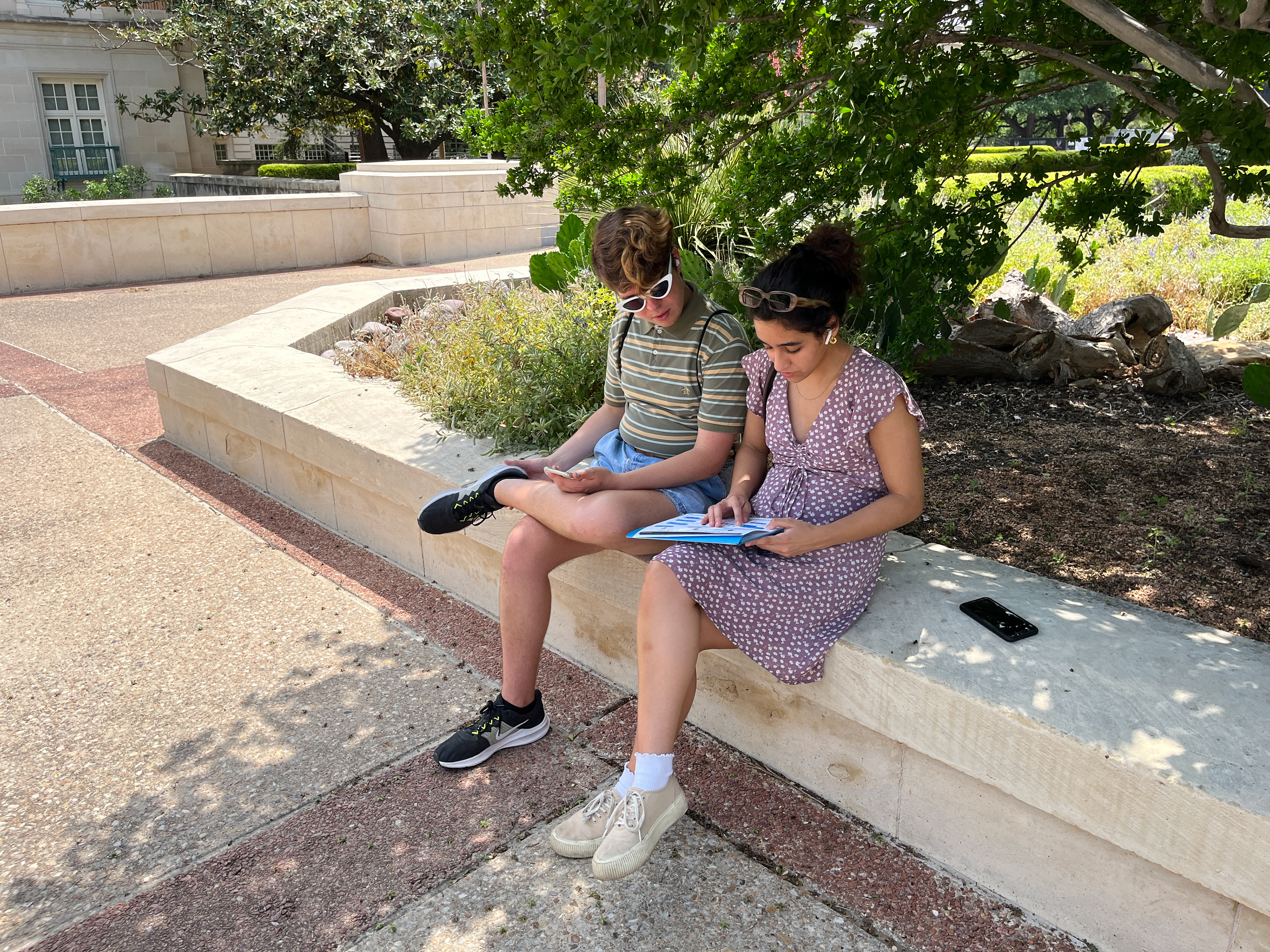
Our first beta testers, Maya and Matthew.
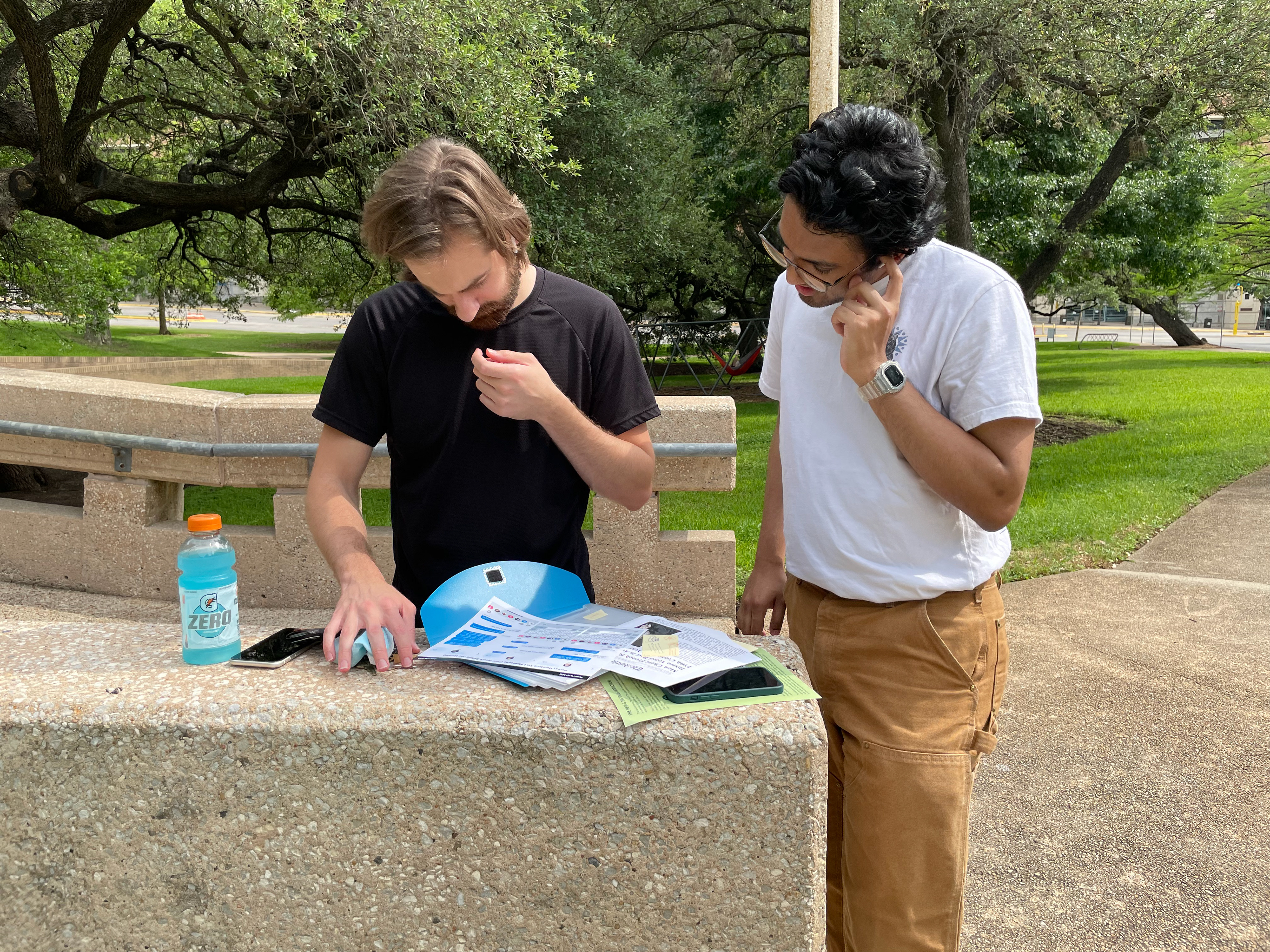
Our second beta testers, Brandon and Ammar.
If you'd like to find out more about the project as a whole, please visit our site: theheirandthespare.cargo.site.
Project Management
As the team's project manager, I oversaw the successful completion of the project from start to finish by implementing weekly meetings, milestone deadlines, a Trello board, and a Miro calendar so that all members of the team were on the same page and knew what tasks lay ahead for the week.
I also juggled numerous miscellaneous logistical tasks, such as:
• Designing and laying out each presentation deck
• Submitting + compiling all of our group assignments
• Creating and maintaining the team's shared Drive to ensure all files were centralised
• Writing meeting recaps for teammates who missed meetings
• Arranging the beta testing walkthroughs using when2meet
• Fabricating the test and final ephemera (which required communication with a third party)
• Taking the lead on starting and organising each assignment
I also juggled numerous miscellaneous logistical tasks, such as:
• Designing and laying out each presentation deck
• Submitting + compiling all of our group assignments
• Creating and maintaining the team's shared Drive to ensure all files were centralised
• Writing meeting recaps for teammates who missed meetings
• Arranging the beta testing walkthroughs using when2meet
• Fabricating the test and final ephemera (which required communication with a third party)
• Taking the lead on starting and organising each assignment
Right after my team was formed, I created a Miro template for us to brainstorm ideas based on the first assignment to ensure a smooth flow during the meeting from point to point (click to enlarge):
I also created the flowcharts for our technology plan after researching potential apps to use for our audiowalk component on top of managing the Trello page and Miro calendar, which proved especially important in the late stages of the project. I set up the calendar by breaking down each week we had available, included important meetings and deadlines per week, and filled in the rest of our time with tasks on our to-do list for each clue in our mystery (eg. finish writing one clue / week). I made sure to use consistent colour-coding across all documentation so that tasks were universally understood for each discipline.
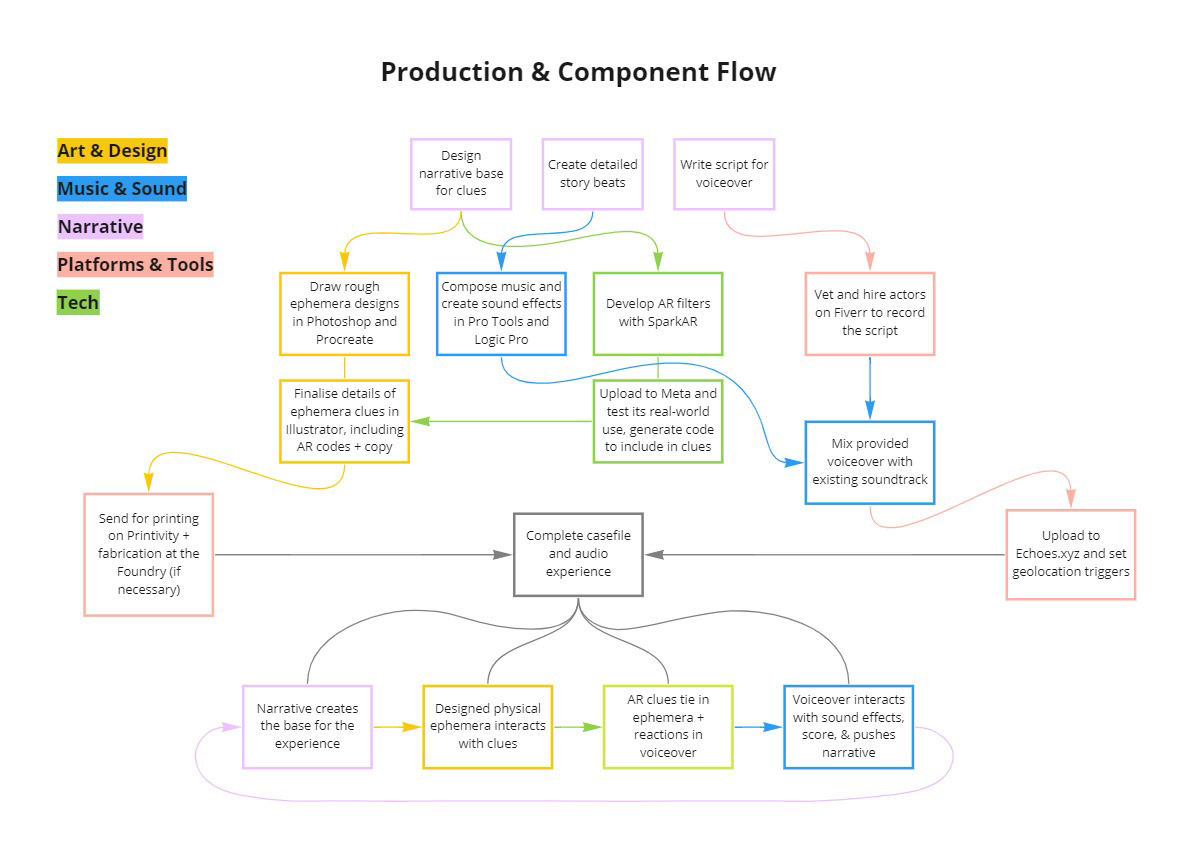

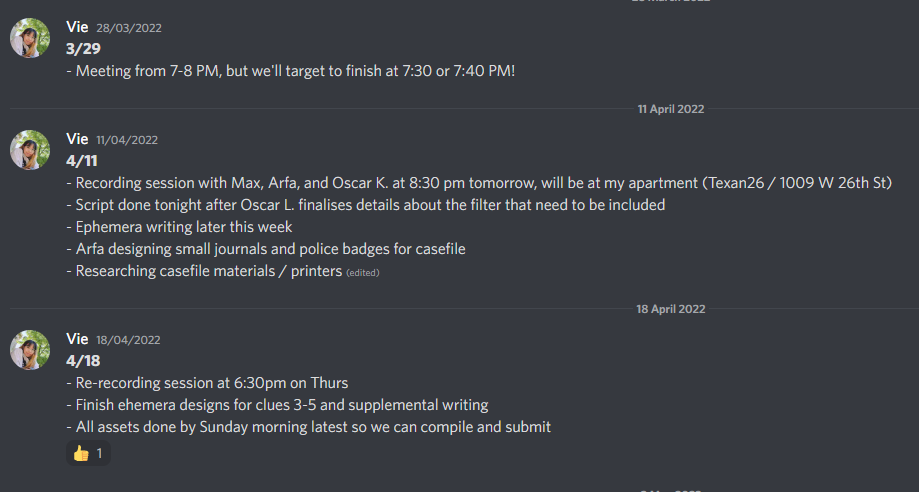
Meeting Recaps on Discord
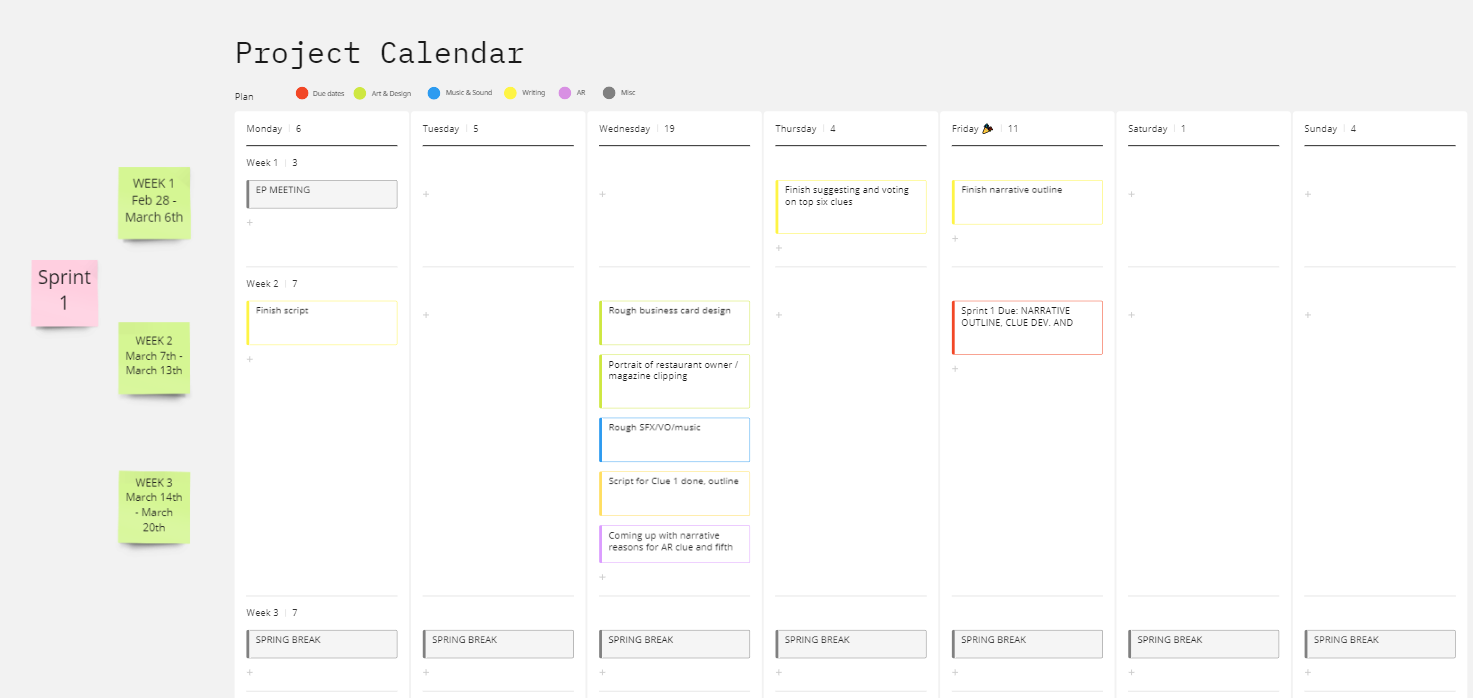
Start of Project Calendar
Additionally, I was responsible for interfacing with Echoes.xyz, which was the app we chose to host our audiowalk. I created both projects, uploaded all clips, wrote descriptions, and hand-placed 14 geolocation beacons to trigger audio clips in the assigned locations. This was the beating heart of our project and worked successfully in beta testing.
Postmortem
Ultimately, I am confident that my project management skills were a driving factor in the success of my team. We hit every milestone we set for ourselves and worked collaboratively to create a functional (and polished) prototype of the experience we envisioned at the very start, which could only have happened if we were all invested and on the same page.
In terms of what I could improve in the future, I sometimes managed my team too much because I had a very specific vision of the final product and wanted to make sure we hit that standard. Due to this expectation, I think that my voice had a precedent over others at times, which isn't ideal in a collaborative environment—though it's a balancing act between having too many or too few opinions driving a project, and I'm still learning how to juggle a necessity for focus with a need for broader viewpoints.
In terms of what I could improve in the future, I sometimes managed my team too much because I had a very specific vision of the final product and wanted to make sure we hit that standard. Due to this expectation, I think that my voice had a precedent over others at times, which isn't ideal in a collaborative environment—though it's a balancing act between having too many or too few opinions driving a project, and I'm still learning how to juggle a necessity for focus with a need for broader viewpoints.
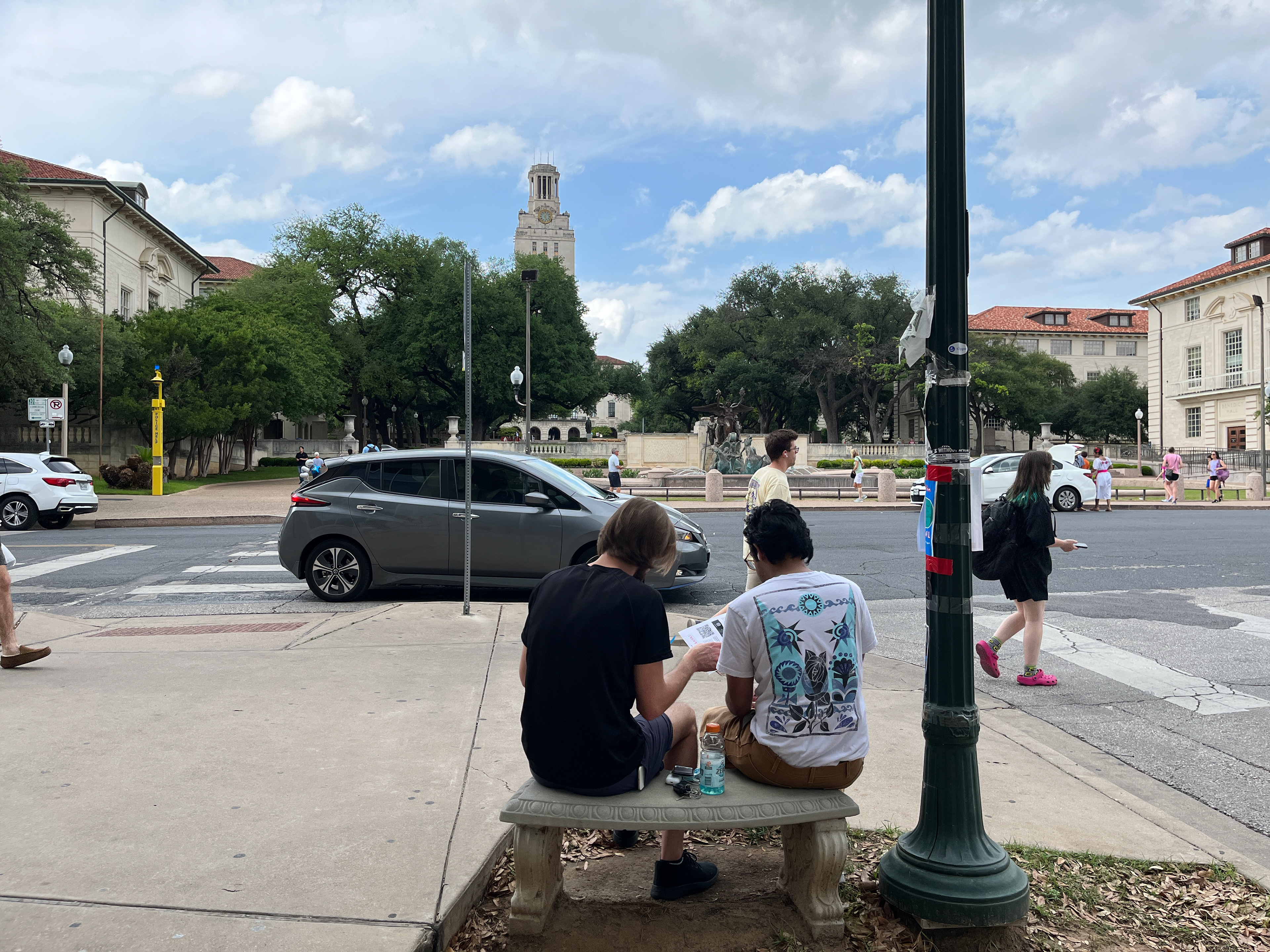
Ammar and Brandon figuring out the AR clue near Littlefield Fountain
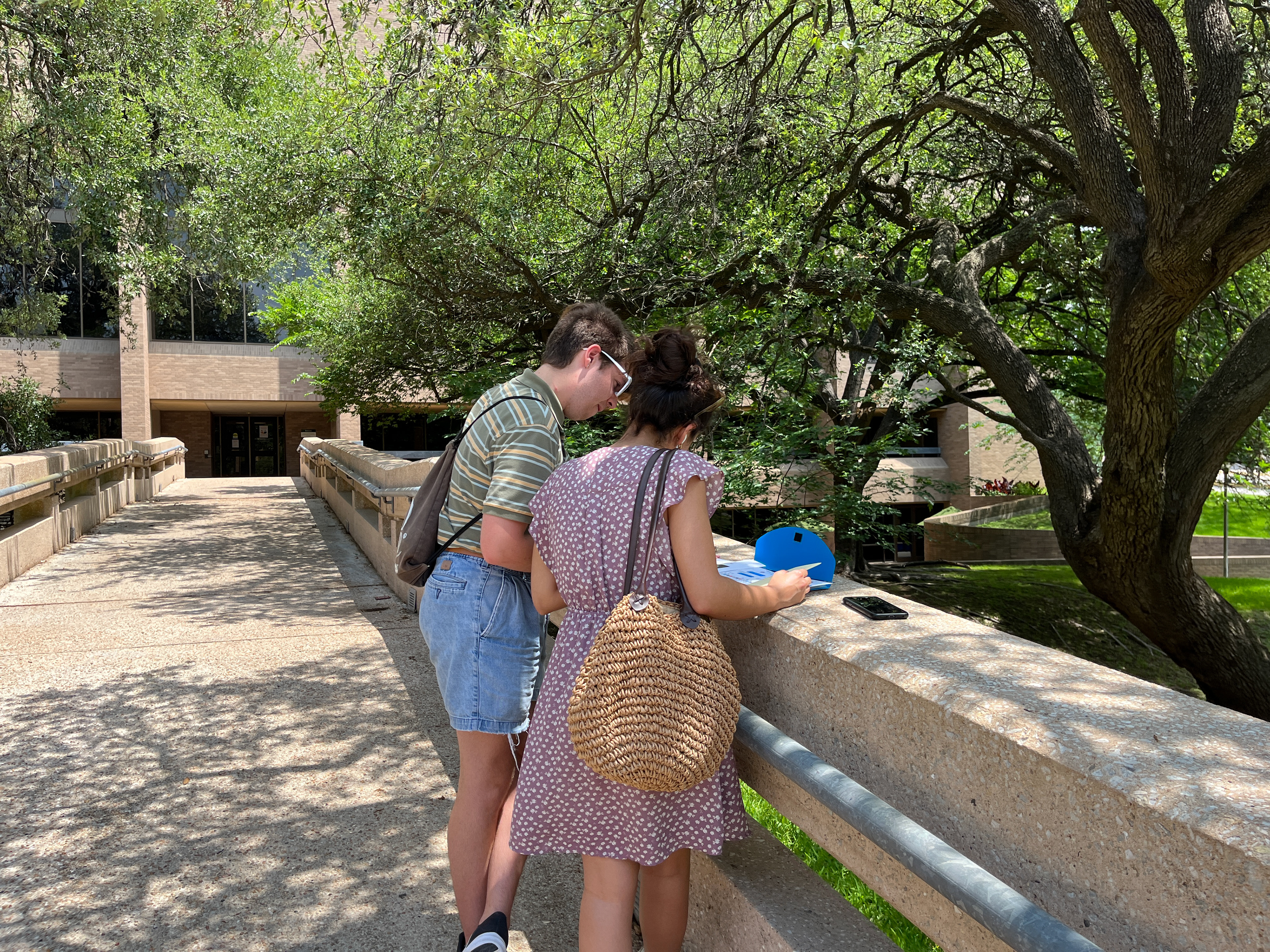
Matthew and Maya at the starting point (DFA Building)
Narrative Development
On the narrative side, I was responsible for all aspects of the story and characters from concept to completion, though my team brainstormed the route and clue types + order together. In all, I wrote 3,000+ words for both characters' scripts and an additional 2,500+ words for all of the supplemental ephemera, including instructions. Download the complete casefile here.
The narrative, in both the script and the ephemera, had multiple purposes: to tell a satisfying and complete story, to connect players directly to their environment to heighten immersion, to give each role a character arc and emphasise the collaborative nature of the experience, and to—most importantly—create a solvable mystery.
To tackle these problems, I started with the characters. As the experience is less about the plot and more about creating emergent opportunities for collaboration between the two players, I wanted to settle on quick sketches all of the characters involved in the story before developing the moment-to-moment experience. Our target audience for the experience was an older and younger person working together to solve the mystery, so the player characters were designed with that in mind.
The narrative, in both the script and the ephemera, had multiple purposes: to tell a satisfying and complete story, to connect players directly to their environment to heighten immersion, to give each role a character arc and emphasise the collaborative nature of the experience, and to—most importantly—create a solvable mystery.
To tackle these problems, I started with the characters. As the experience is less about the plot and more about creating emergent opportunities for collaboration between the two players, I wanted to settle on quick sketches all of the characters involved in the story before developing the moment-to-moment experience. Our target audience for the experience was an older and younger person working together to solve the mystery, so the player characters were designed with that in mind.
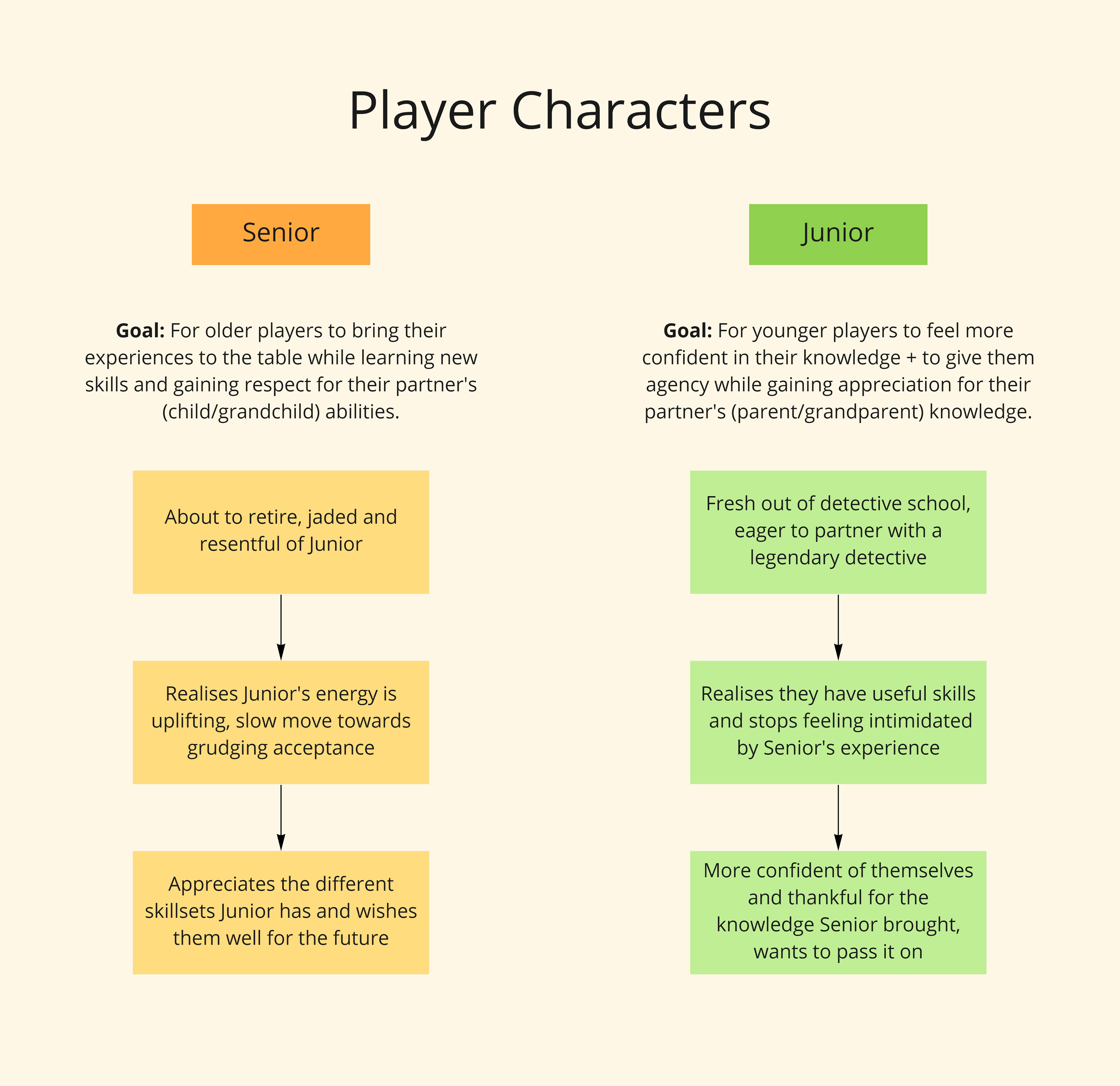
Flowchart showing character goals and progression throughout the walk
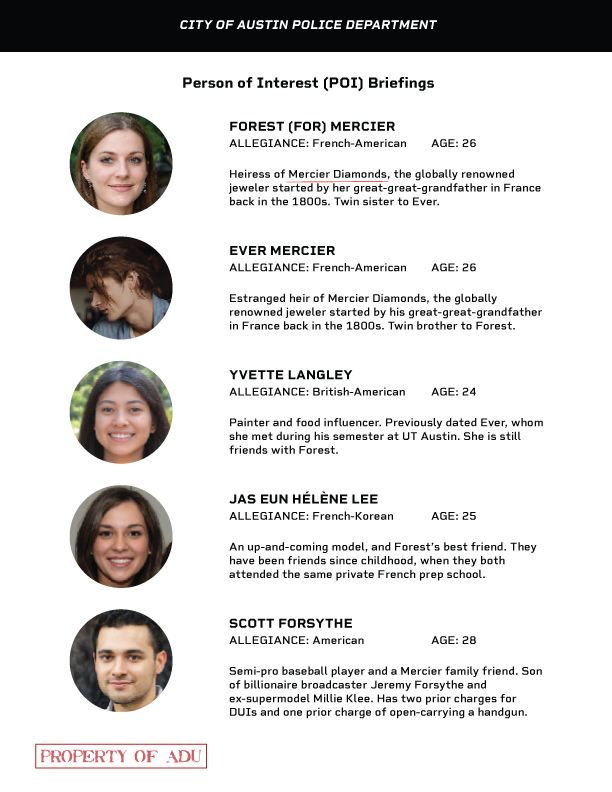
In-universe bios of each non-player character which I wrote and designed
The player characters (PCs) had arcs that reflected the progression I wanted the real people playing to feel at the end of the experience: excited that they were able to collaborate with one another and more respectful of each person's skills and knowledge, no matter the age gap. The rest of the characters—excepting Forest and Ever—were supporting acts with less time spent on development as they were mainly world-building tools and red herrings. The only character not listed here is Garcia, the detective inspector, who served as a mouthpiece for exposition and context for off-audio events.
The PCs also needed to be blank enough slates that anyone playing could fully immerse themselves. To that end:
• No pronouns are given for each PC—they are only referred to as Junior and Senior
• There no descriptions of physical attributes for either character, only descriptions of their inner thoughts
• Neither PC is given a name
I used these characters as a base to generate a simple logline: Two detectives must pair up to solve the murder of a diamond heiress by pinpointing her murderer before assisting the lead inspector in finding him before he flees the country.
This logline then informed the creation of the ephemera to tell this story in a fragmented, non-traditional and non-linear way. To get my team's input, I asked them to brainstorm clue ideas before we all voted on them and decided on the order together. Once that was completed, I wrote out a summary of the entire story justifying each clue (eg. what were the witness statements for?) so that I had a linear synopsis of the events before I started writing the script and ephemera text.
The PCs also needed to be blank enough slates that anyone playing could fully immerse themselves. To that end:
• No pronouns are given for each PC—they are only referred to as Junior and Senior
• There no descriptions of physical attributes for either character, only descriptions of their inner thoughts
• Neither PC is given a name
I used these characters as a base to generate a simple logline: Two detectives must pair up to solve the murder of a diamond heiress by pinpointing her murderer before assisting the lead inspector in finding him before he flees the country.
This logline then informed the creation of the ephemera to tell this story in a fragmented, non-traditional and non-linear way. To get my team's input, I asked them to brainstorm clue ideas before we all voted on them and decided on the order together. Once that was completed, I wrote out a summary of the entire story justifying each clue (eg. what were the witness statements for?) so that I had a linear synopsis of the events before I started writing the script and ephemera text.
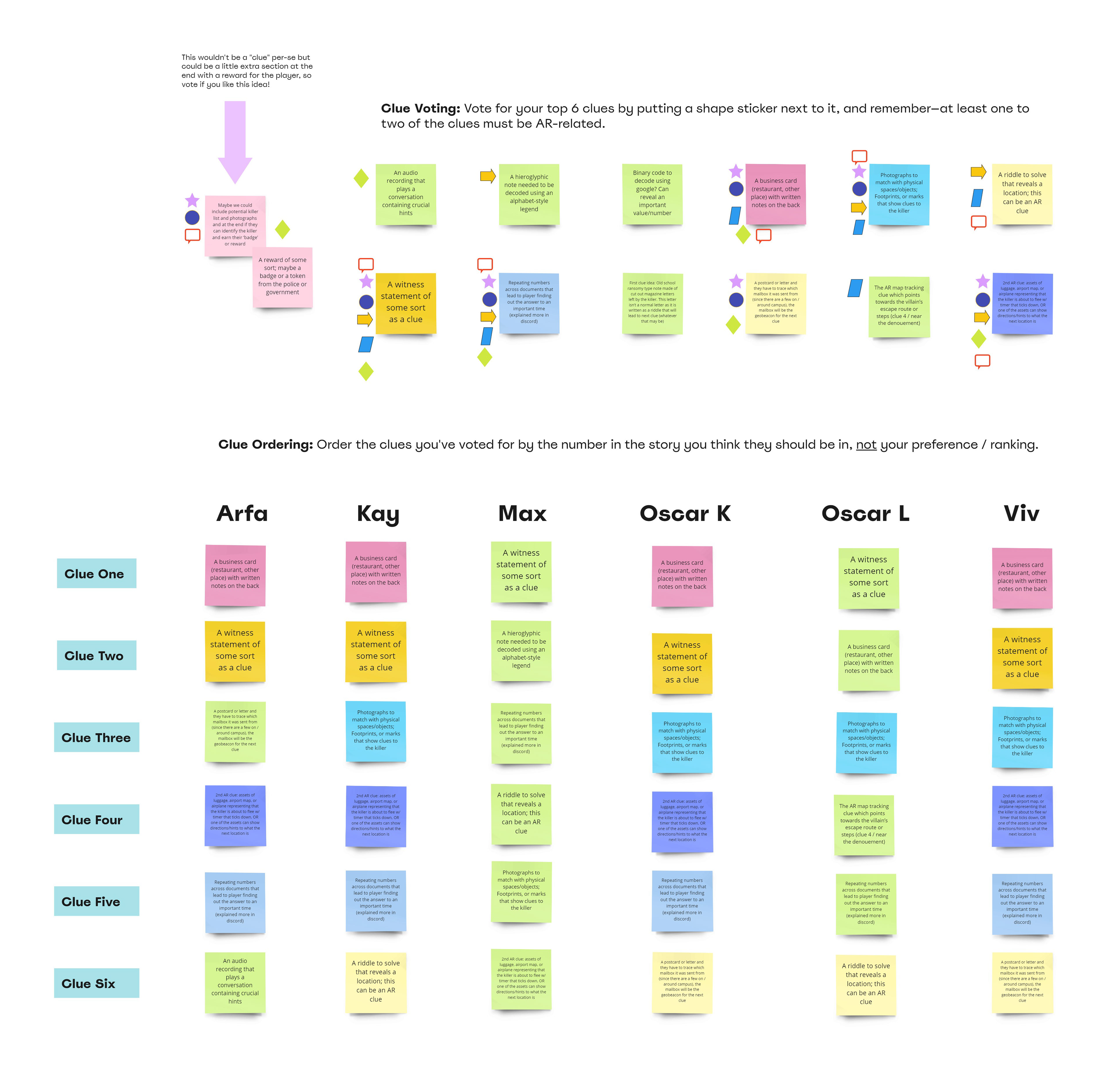
Miro board with clue ideas, voting, and ranking order
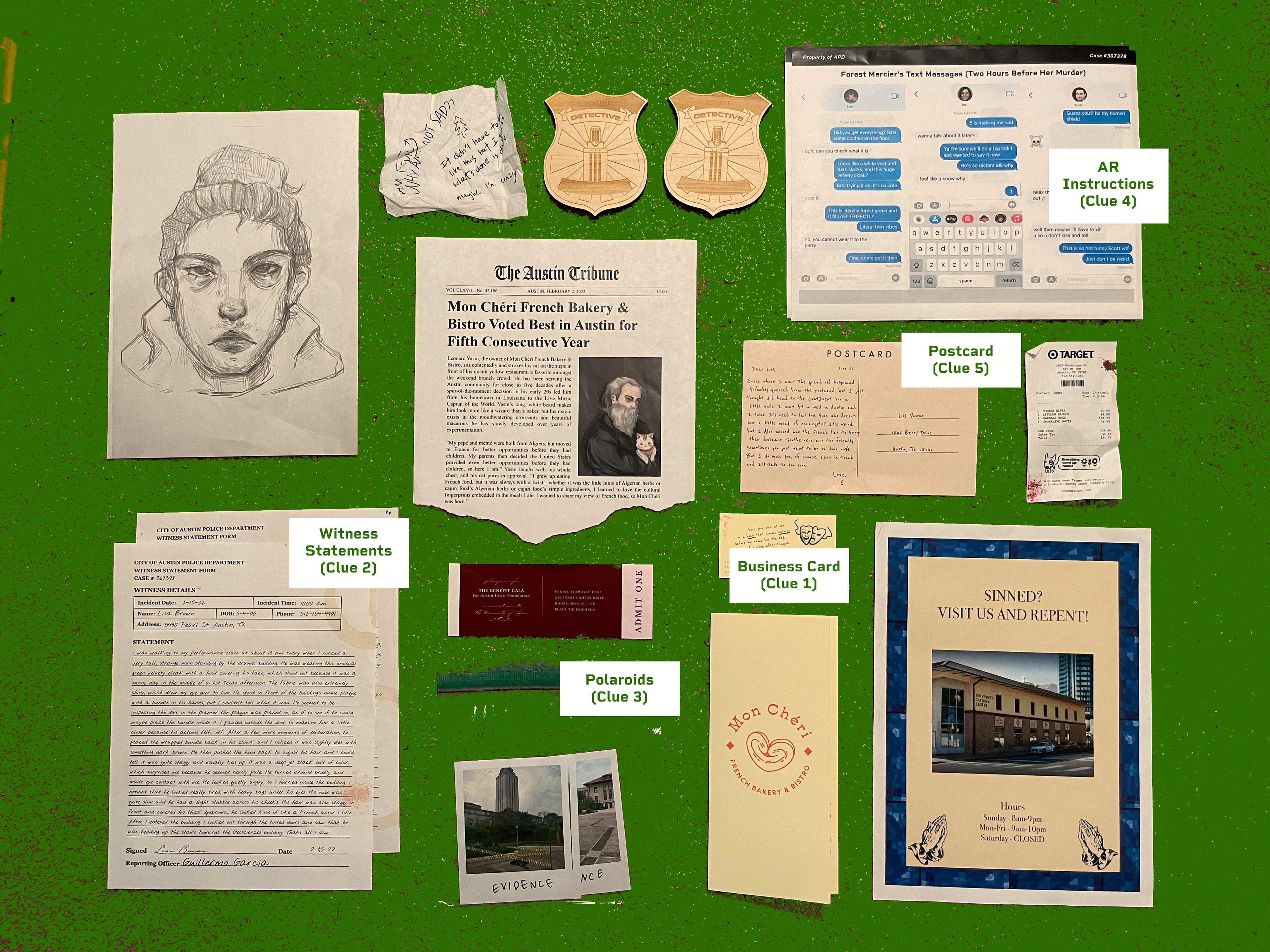
Final, fabricated ephemera: the highlighted pieces are the "heros" containing the actual clue
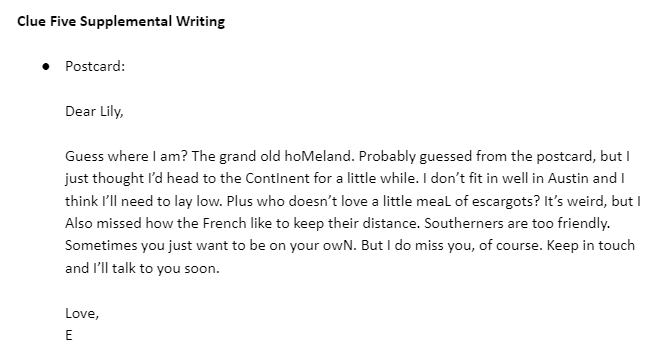
Raw text in Google Doc
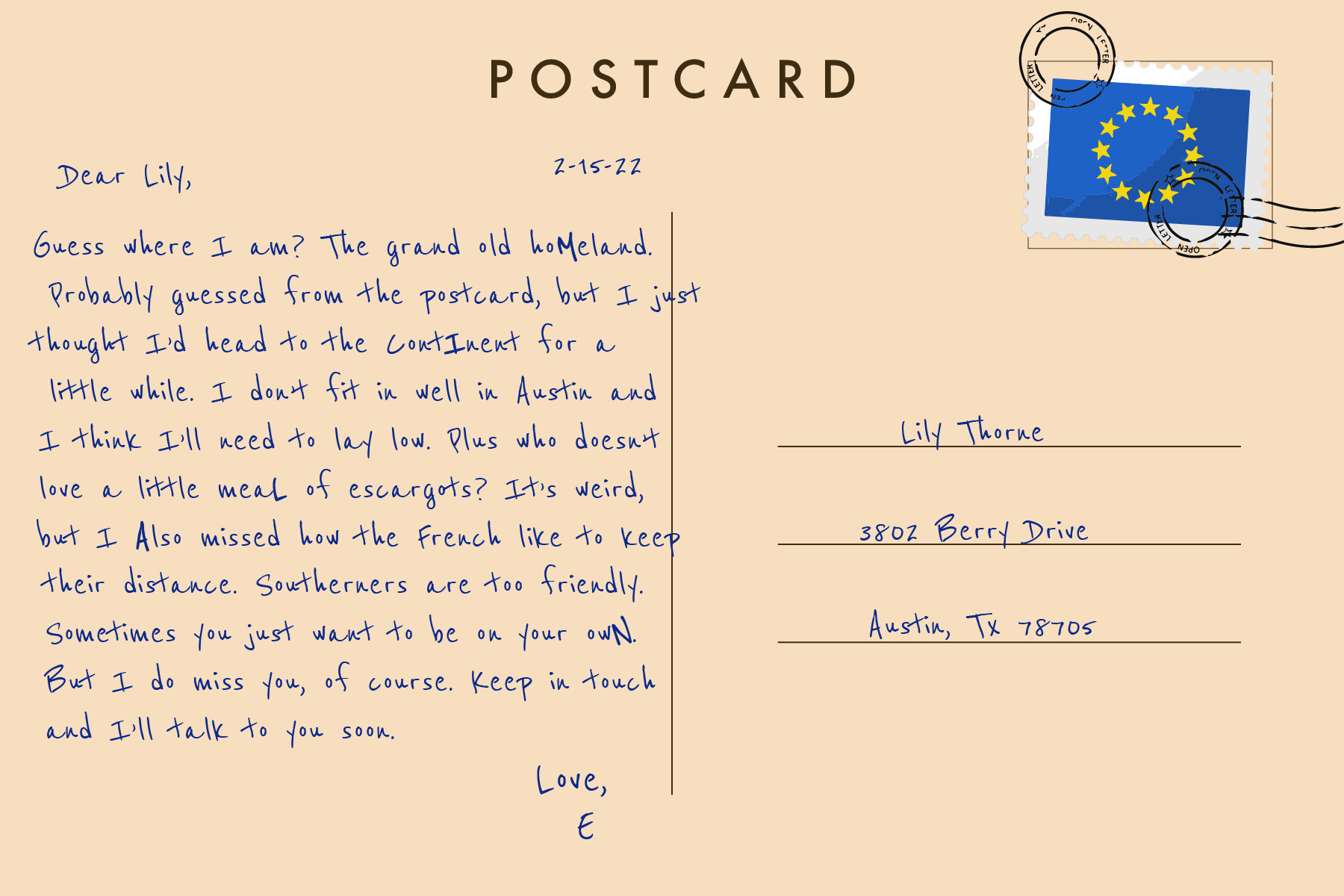
Text after turning it into ephemera
The actual writing work then began in a master document, which I split into the script and the supplemental text for the clues and ephemera. For the script, I focused on character progression and connecting the player to the environment they were in, while for the ephemera, I tried my best to create clues that were easy enough to solve but not too easy as to give the solution away. Besides the main clues we decided on, I had to create 2 extra elements per location to build out the world and provide more story context. For example, Clue 1 was a business card, but it was accompanied by a menu of the restaurant the card was from as well as an interview with the owner. I helped concept them and they were brought to life by our talented designers.
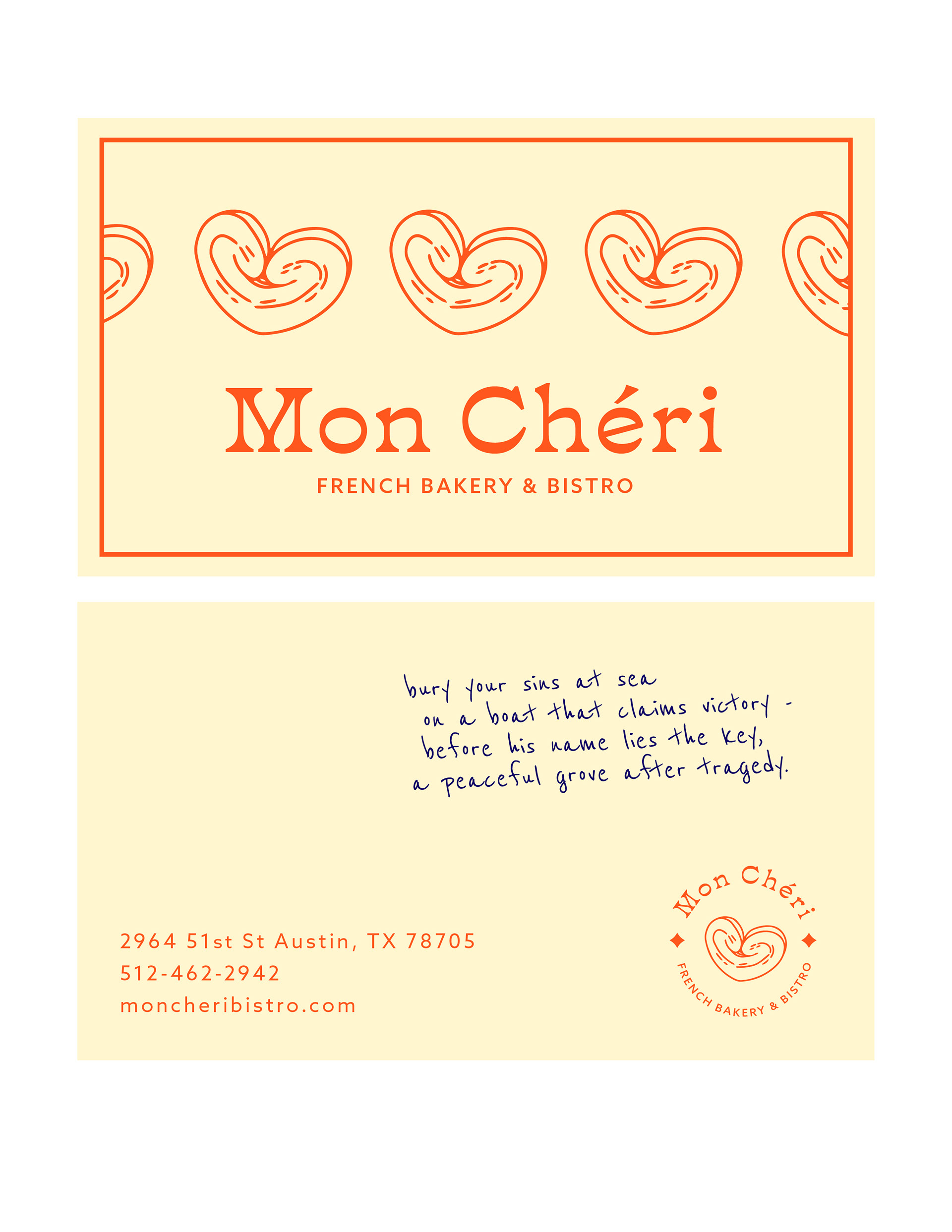
Hero prop for Clue 1
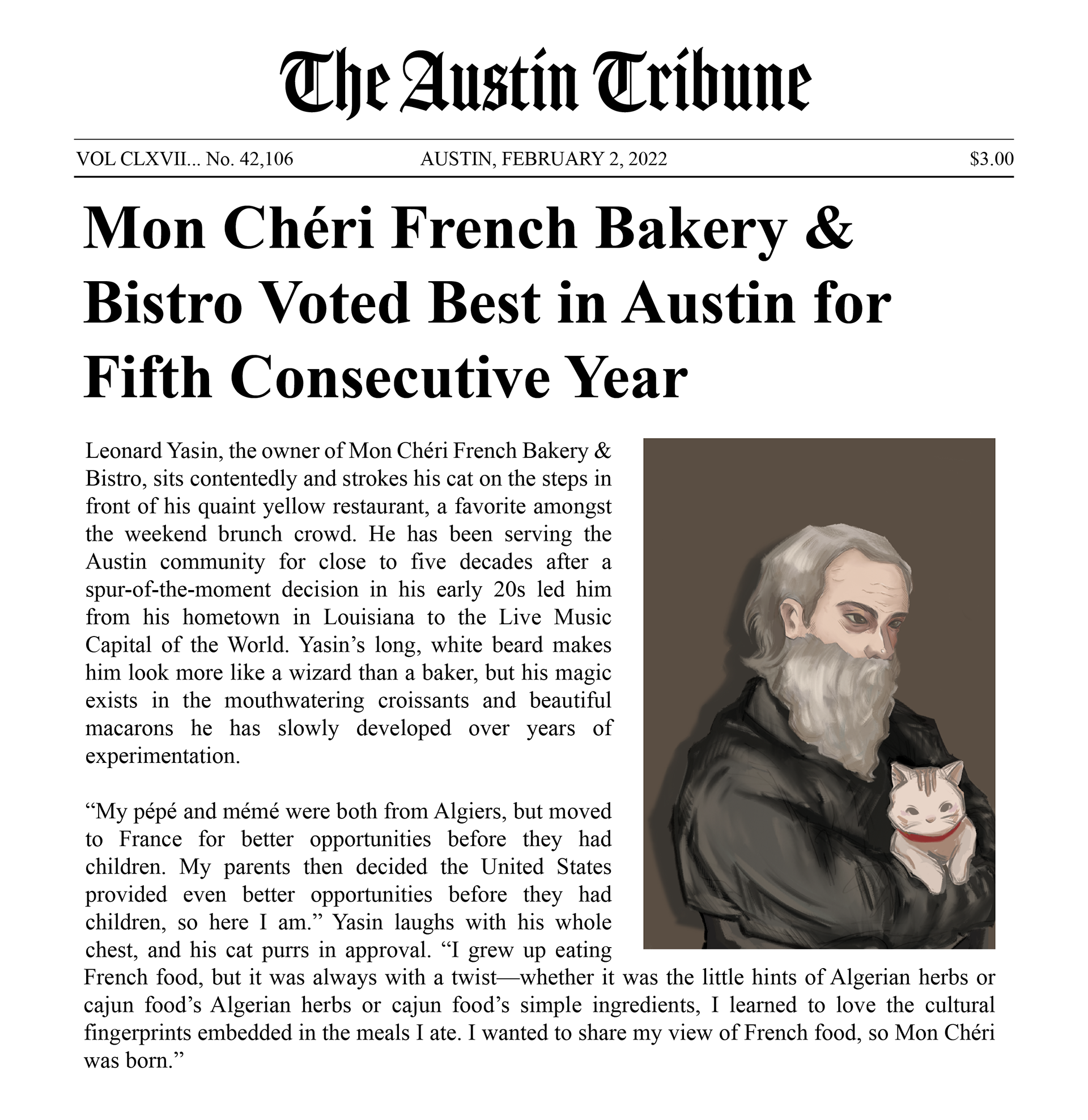
Supplemental ephemera
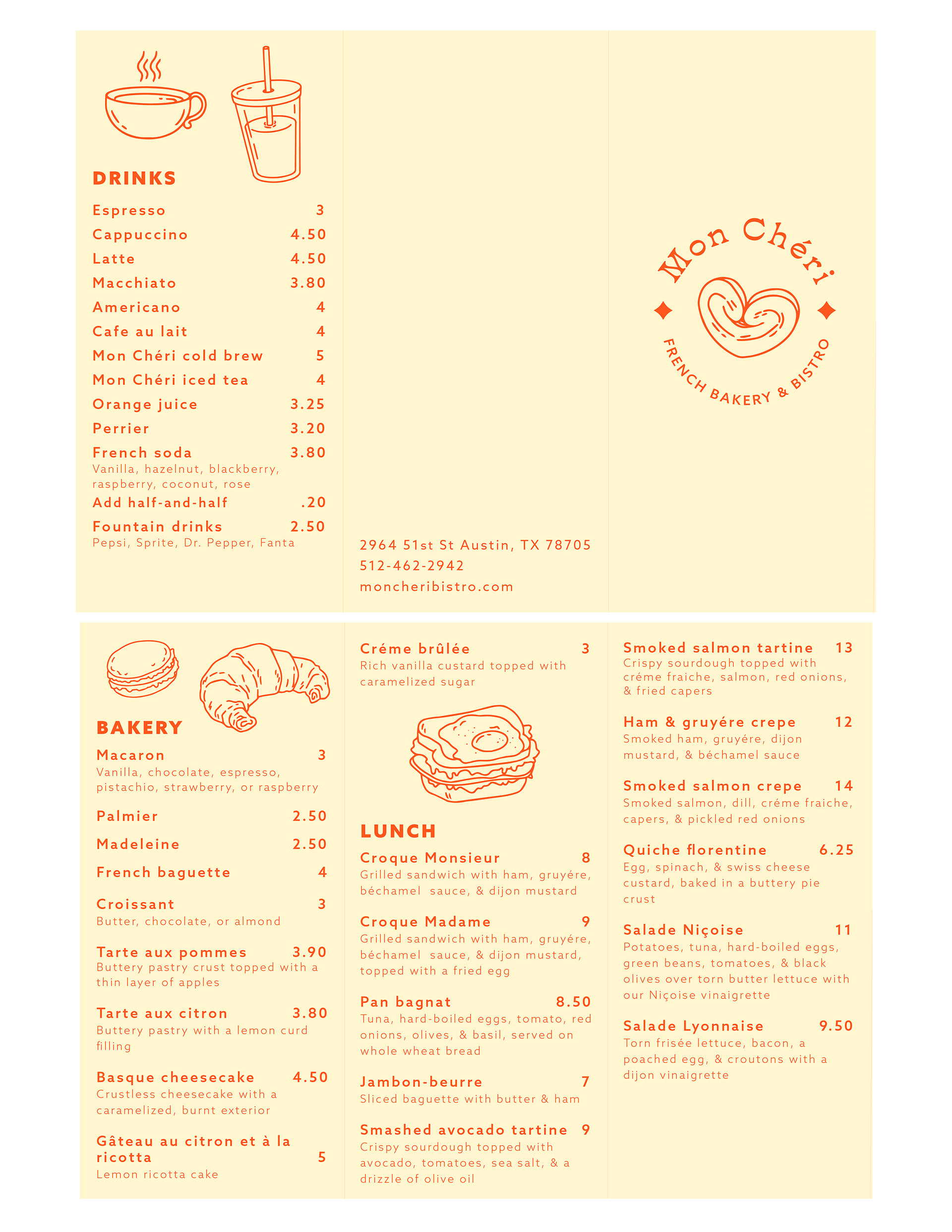
Supplemental ephemera
Lastly, I oversaw the recording of the voiceover to accompany the script, which included SFX guidelines and markers. Here's a sample from Clip 5, which Player One hears after they solve Clue 4, the AR clue:
Postmortem
Overall, I think I did good job tying everything together into one cohesive narrative, especially when my main skillset is design. I do like writing and I have taken some narrative courses, but I did not approach this project as a professional narrative designer might, oftentimes adjusting the script or ephemera as I went instead of planning everything out from the start. From beta testing, I know that the story is understandable (mostly because I kept it so simple) but there is always room for improvement. With more time, I could have provided increased context to the characters and events in the story and brainstormed better solutions to some clues so that the difficulty remained consistent throughout the experience. For a prototype, however, I think this was a solid and complete effort which I am happy with.
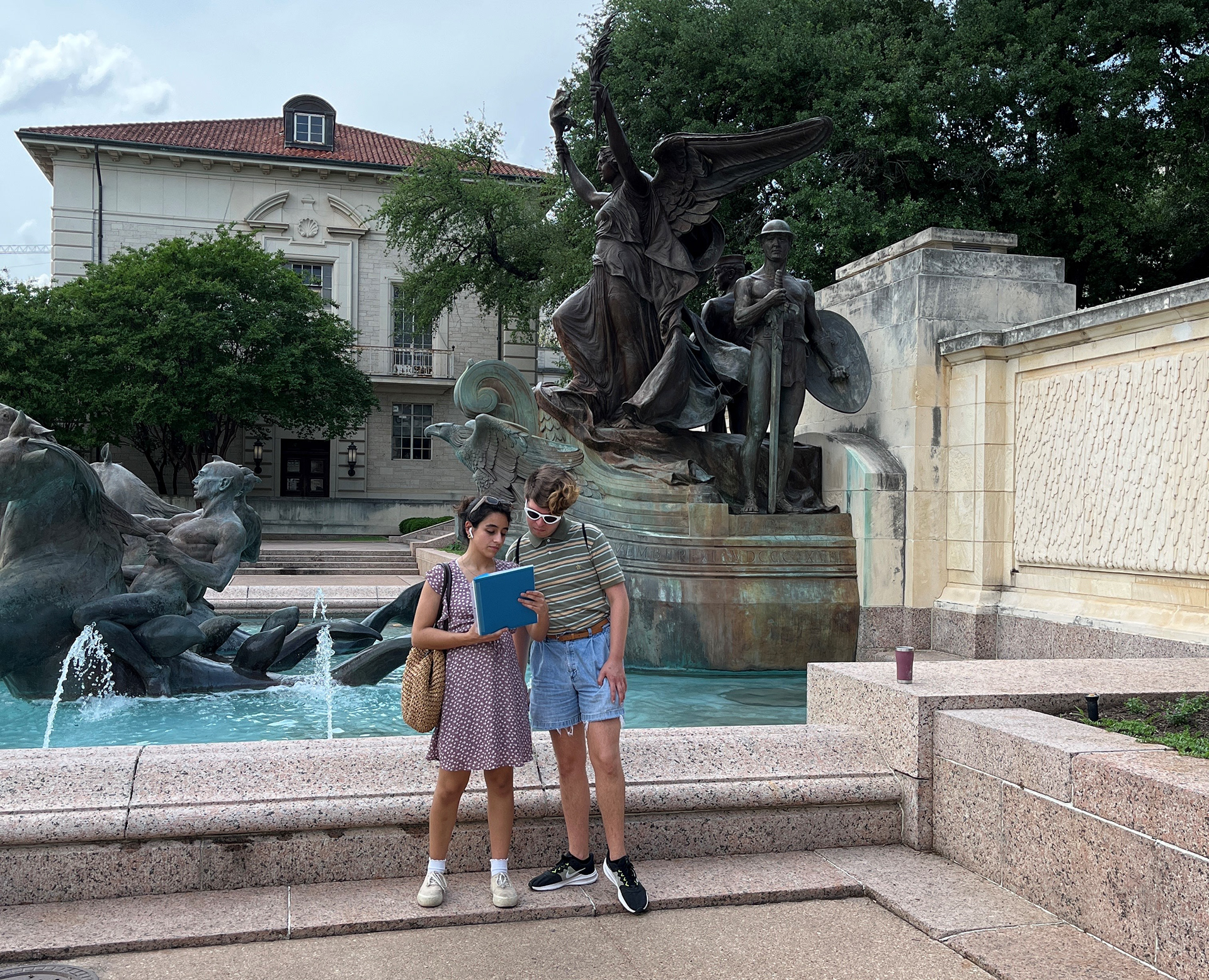
Maya and Matthew getting sidetracked in front of the fountain
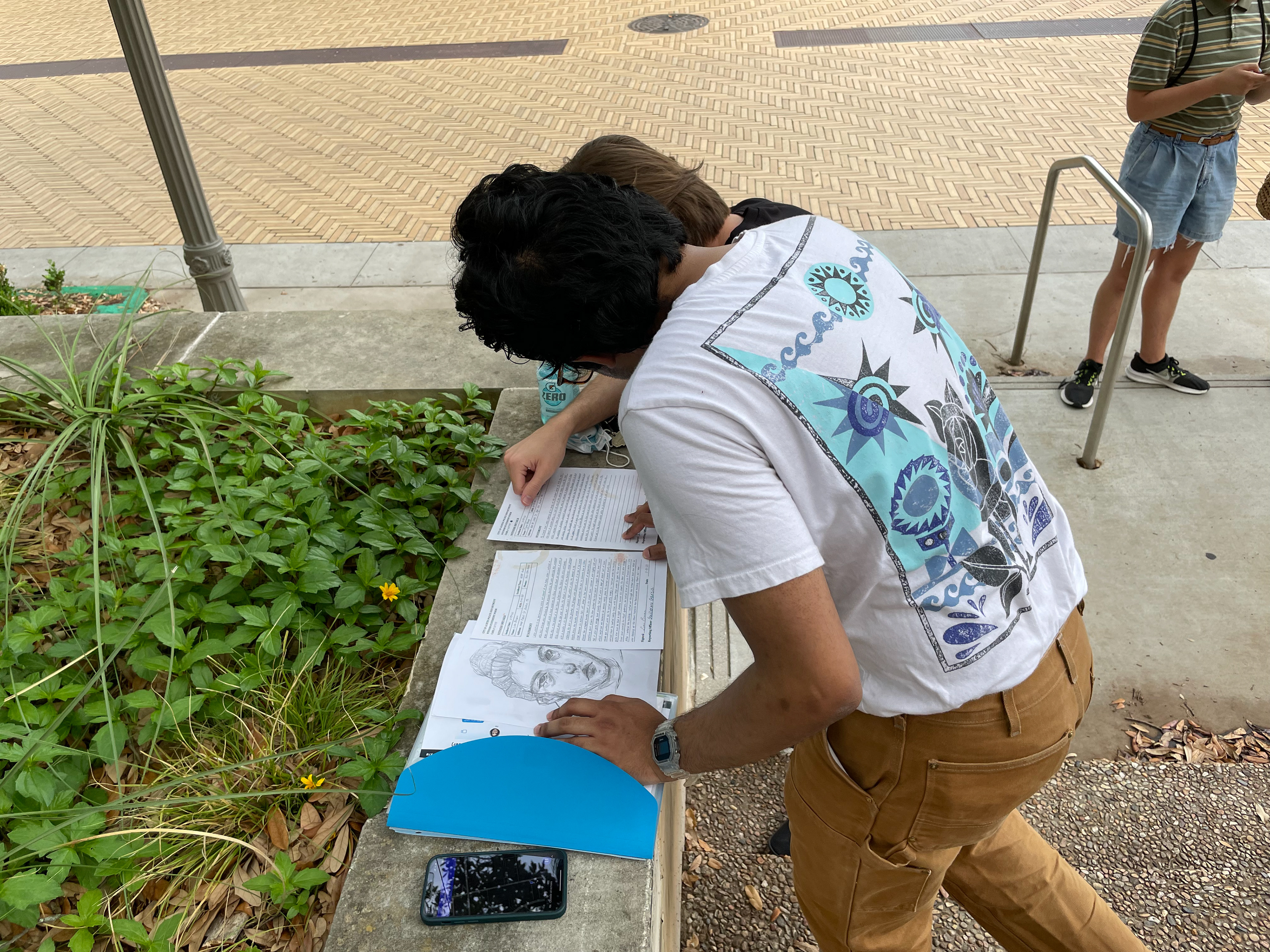
Brandon and Ammar stopping to check the files on the way to the Tower
Design
Finally, I helped the design team put together some of the ephemera when they didn't have time to do so. I designed most of the text-heavy paper documents and made sure each of them fit the tone we were going for. For example, police documents are more utilitarian than fun, so my designs for the AR instruction sheets, text messages, and bios were meant to be easy to read while maintaining consistent elements (font, border) to look like the documents came from the same person. Additionally, the witness statements were digitally distressed to add to the worldbuilding, with the same handwriting font used for both to imply that Garcia filled the forms out himself. These documents were created in Photoshop and Illustrator.
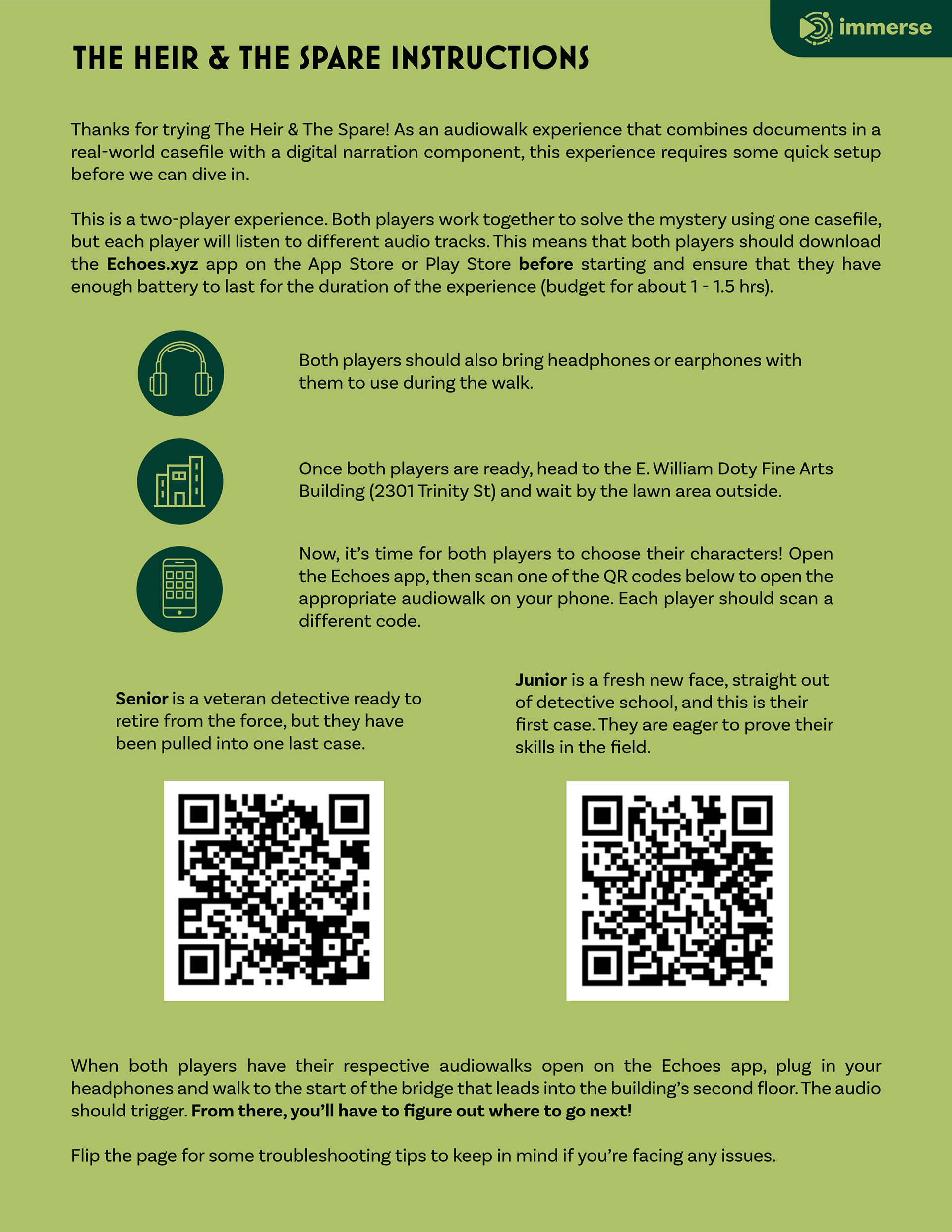
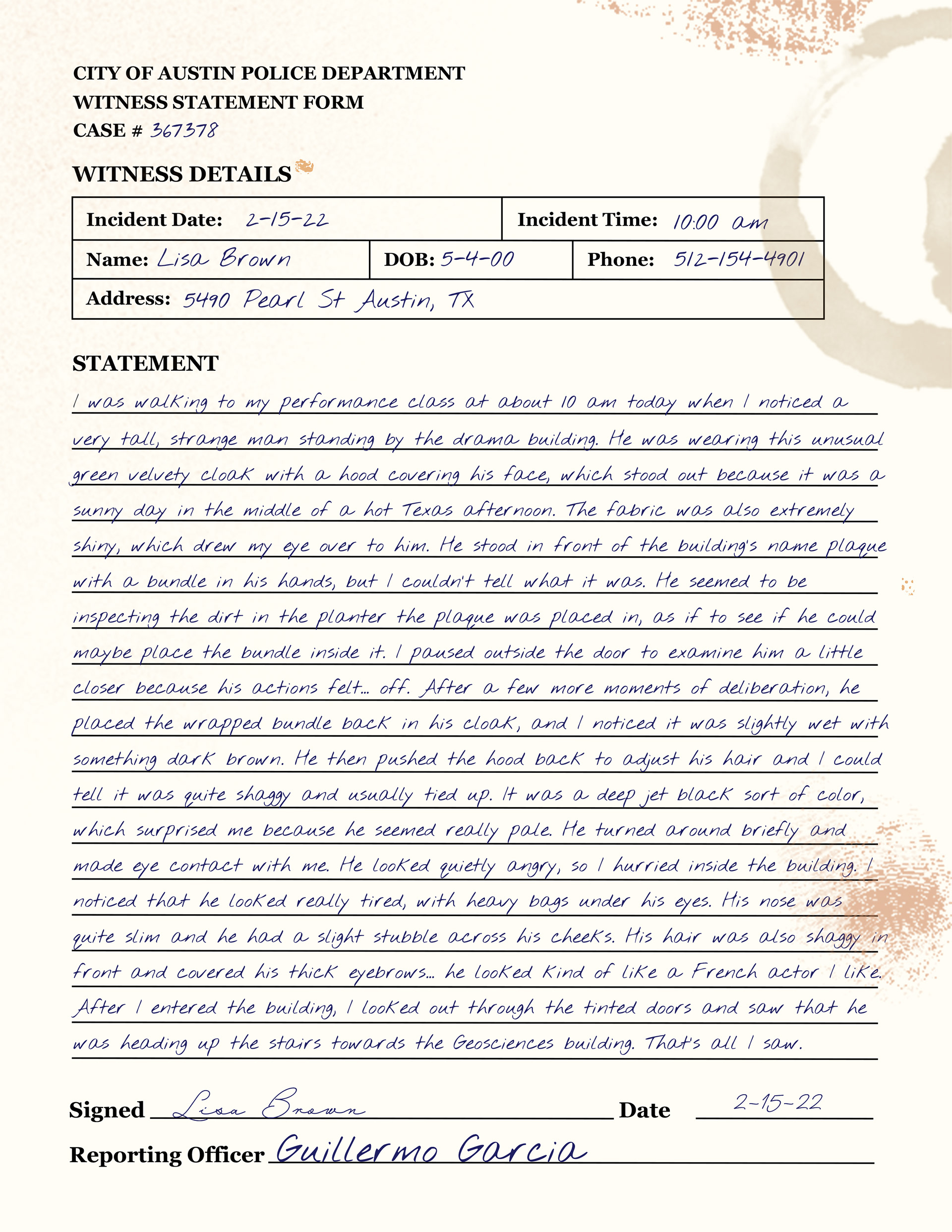
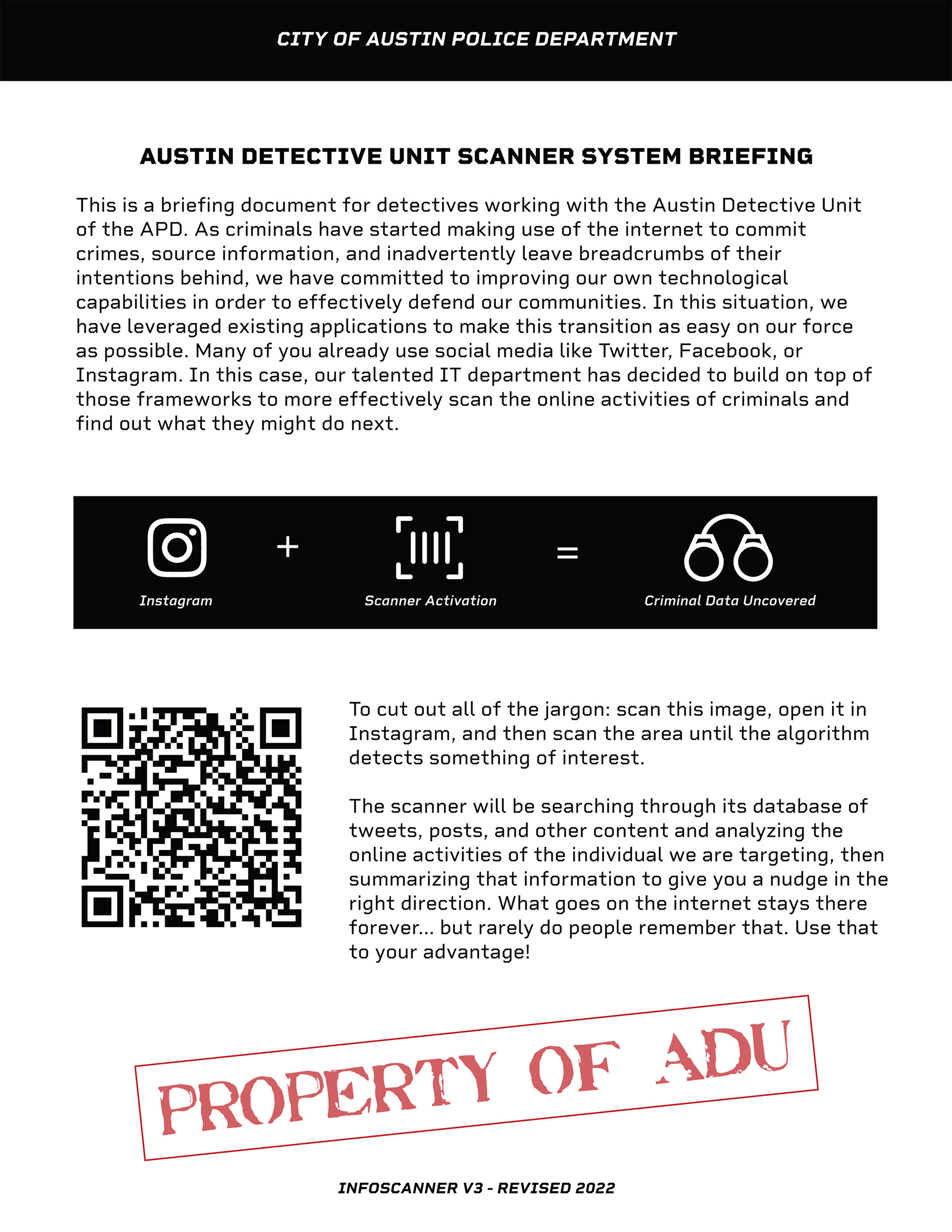
I also helped storyboard both of our final videos, and narrated + cleaned up the edits for the walkthrough. I used my knowledge of laser cutting to fabricate the badges that Arfa designed in Illustrator as well.
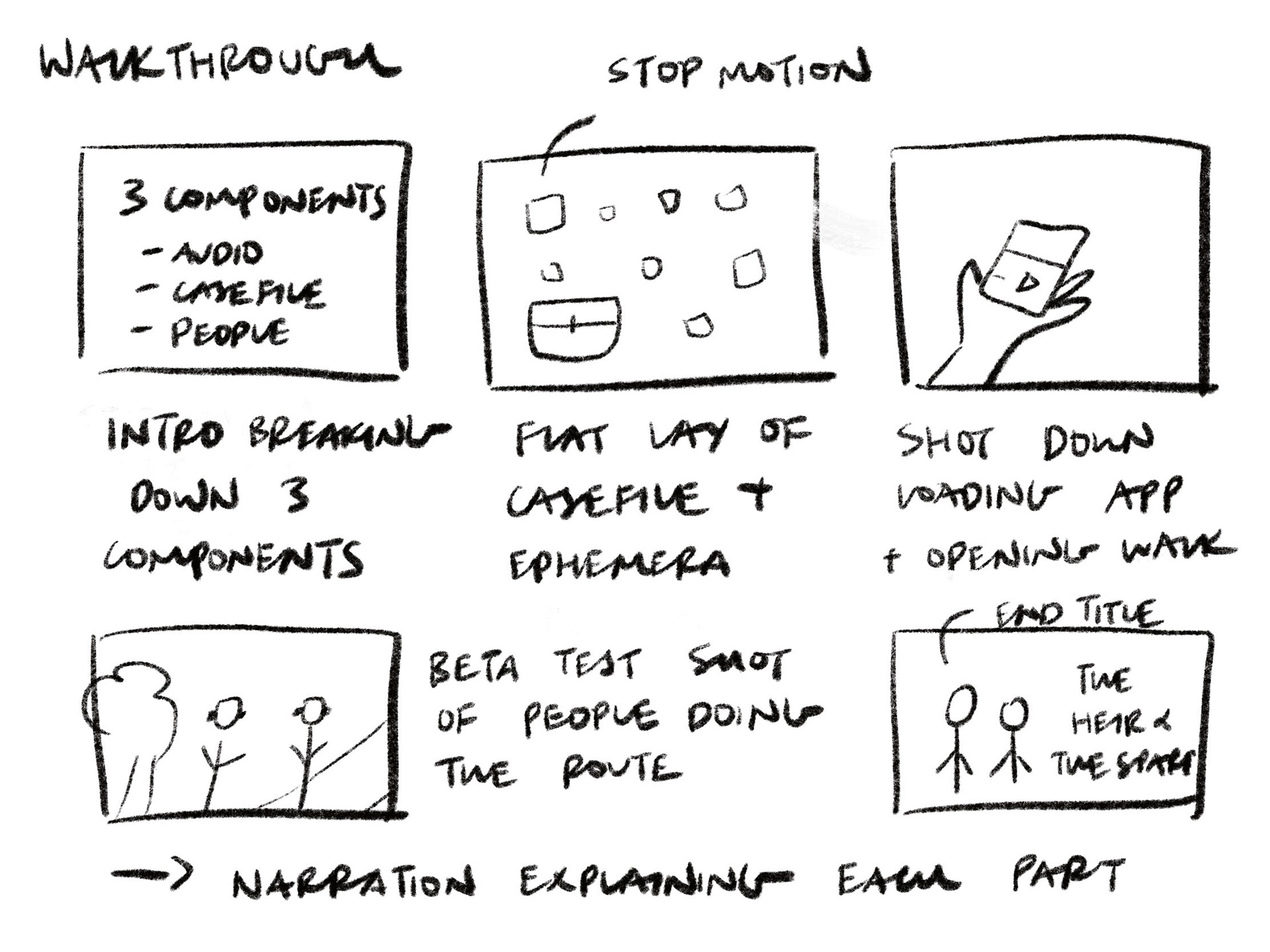
Walkthrough Storyboard
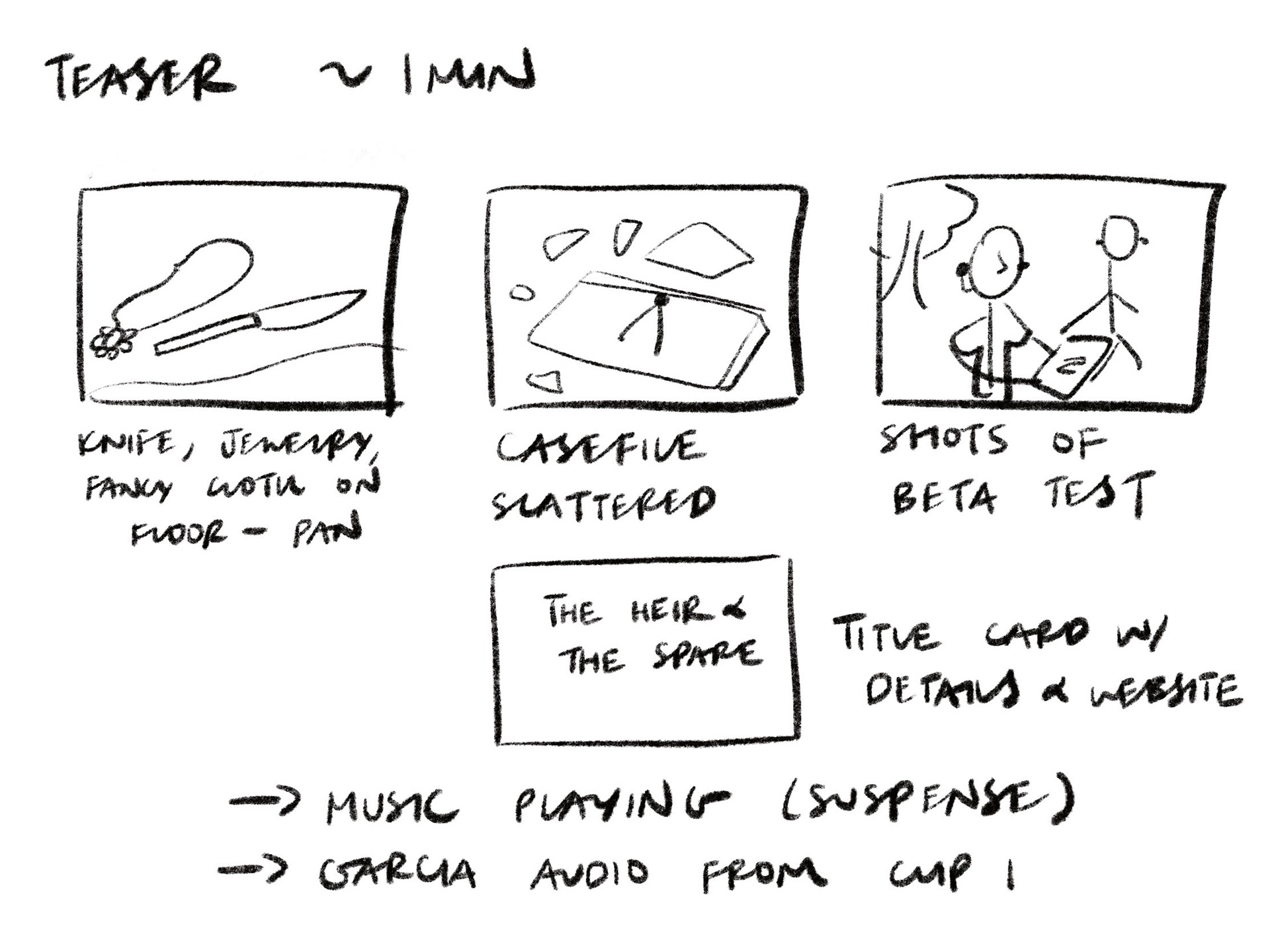
Teaser Storyboard
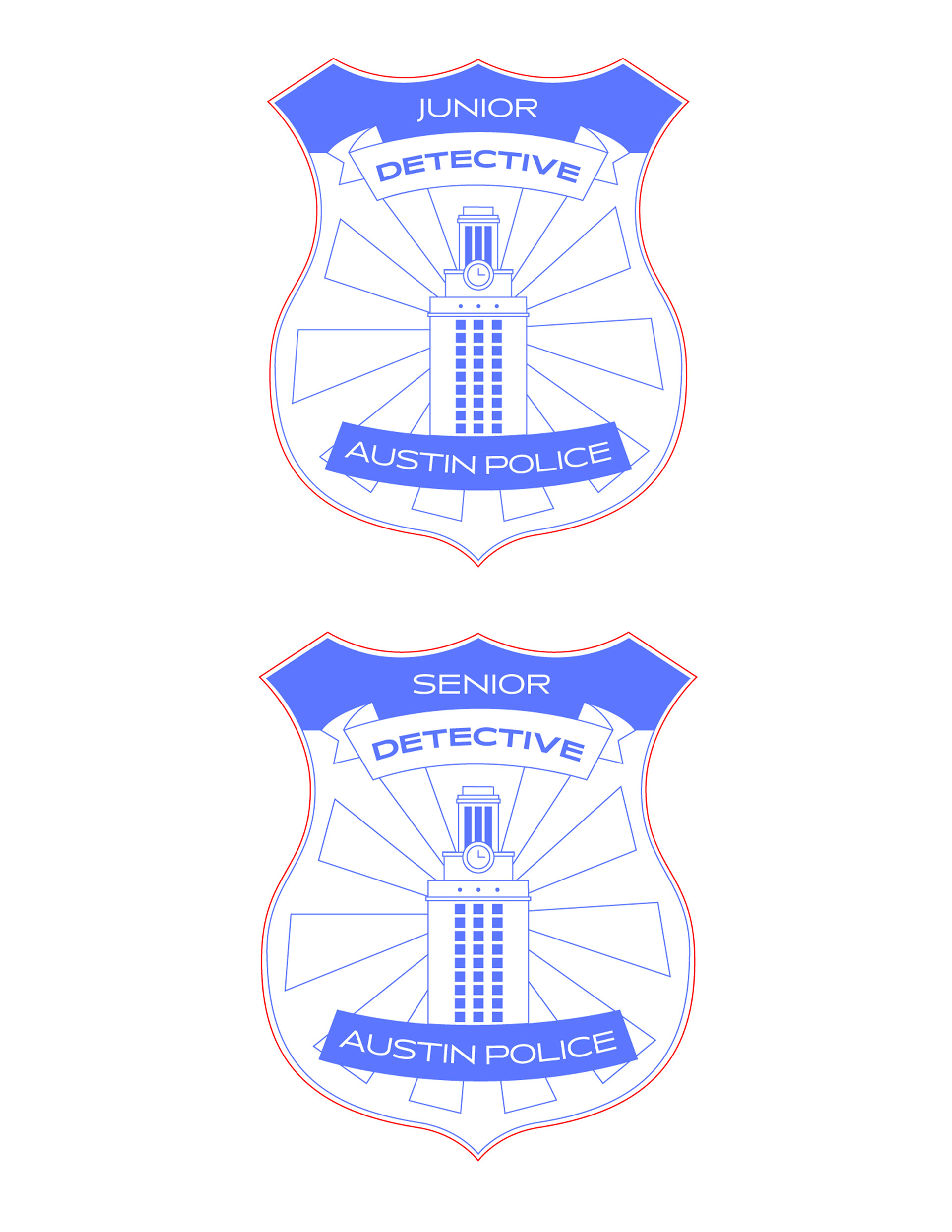
Badges designed in AI
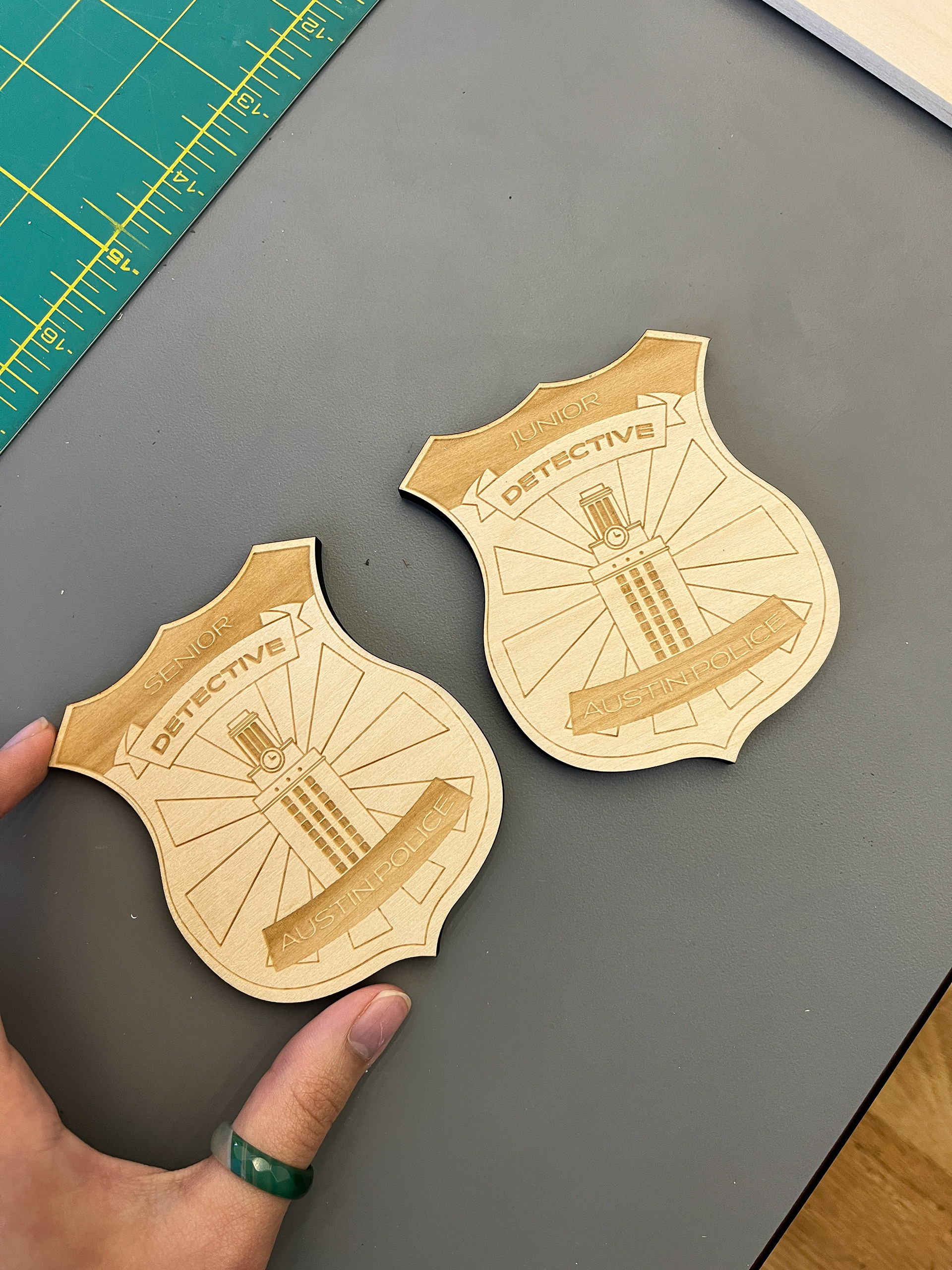
Badges fabricated
Postmortem
While I was not the main designer on the team, I provided important support to other team members and used my skills to successfully create some of our ephemera. A lot of my work was done to organise text-heavy pieces and I ultimately think those pieces were successful. My larger contribution in terms of design was providing feedback to align the ephemera being produced with the text I was writing. For example, Arfa wasn't sure what whether she should include a French or Italian stamp on the postcard. Either stamp would give away the killer's location, so I advised her to find a general EU one. In these scenarios, my role was more as a visionary and creative director, helping to keep the team in focus, and I think it made for a strong project. I would say that my only issue in this area was that I didn't get to do as much design work as I wanted, and in the future I will align my projects more closely with the skillset I want to practice the most.